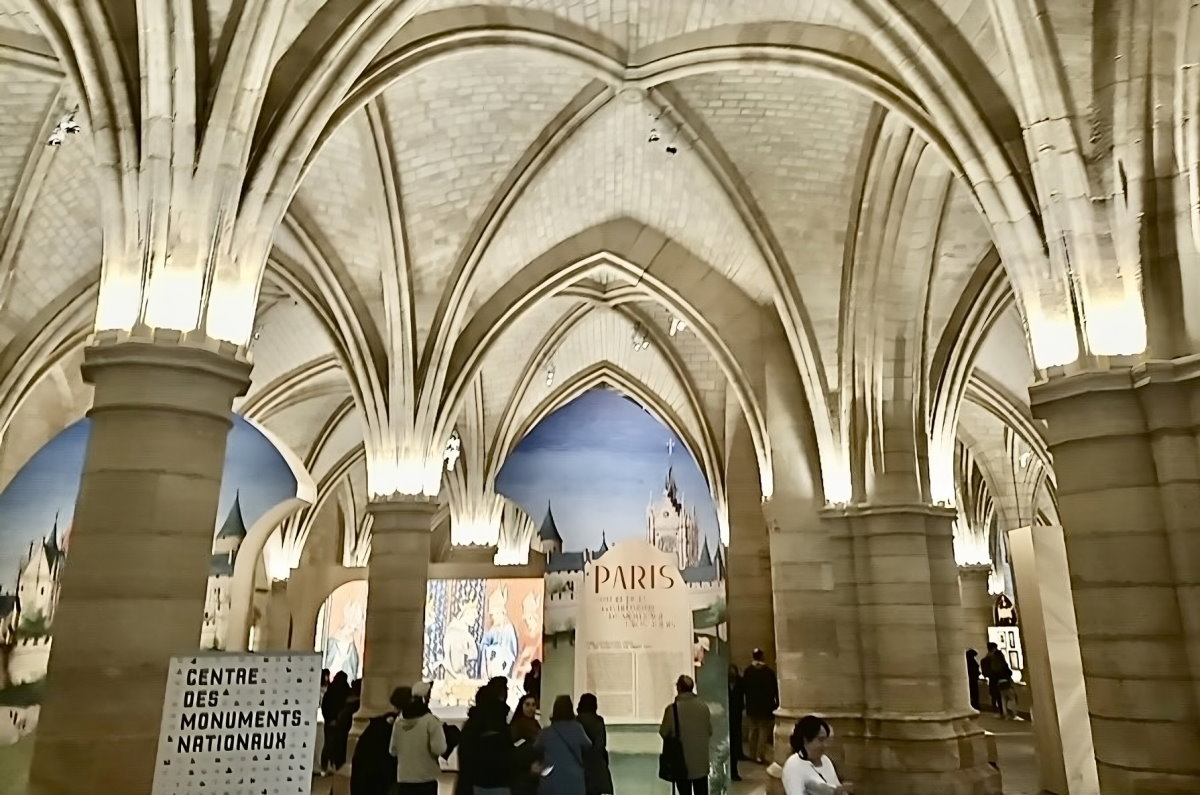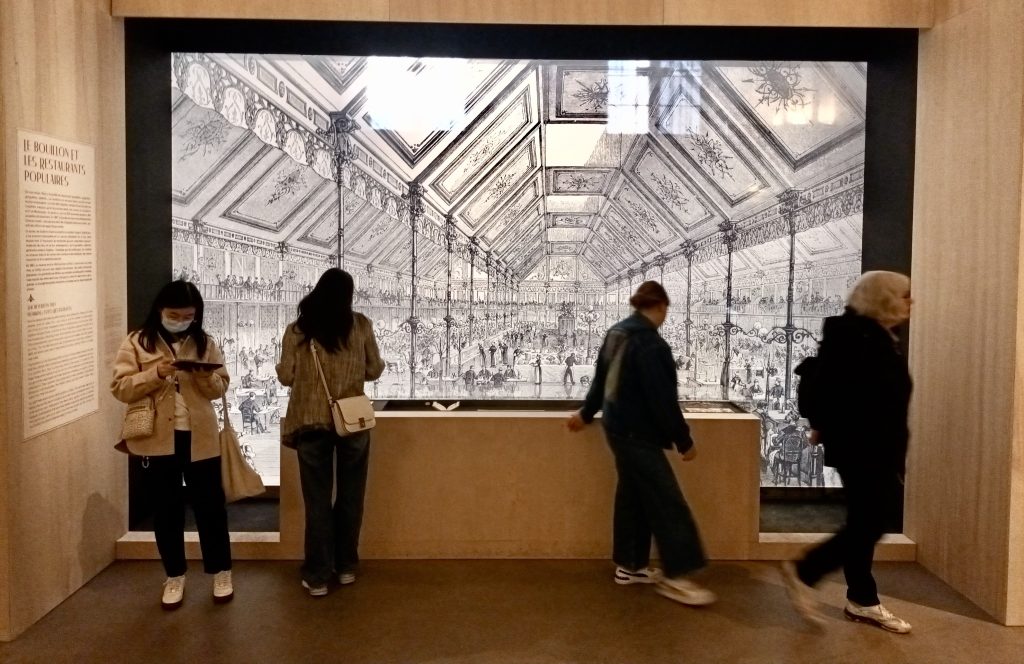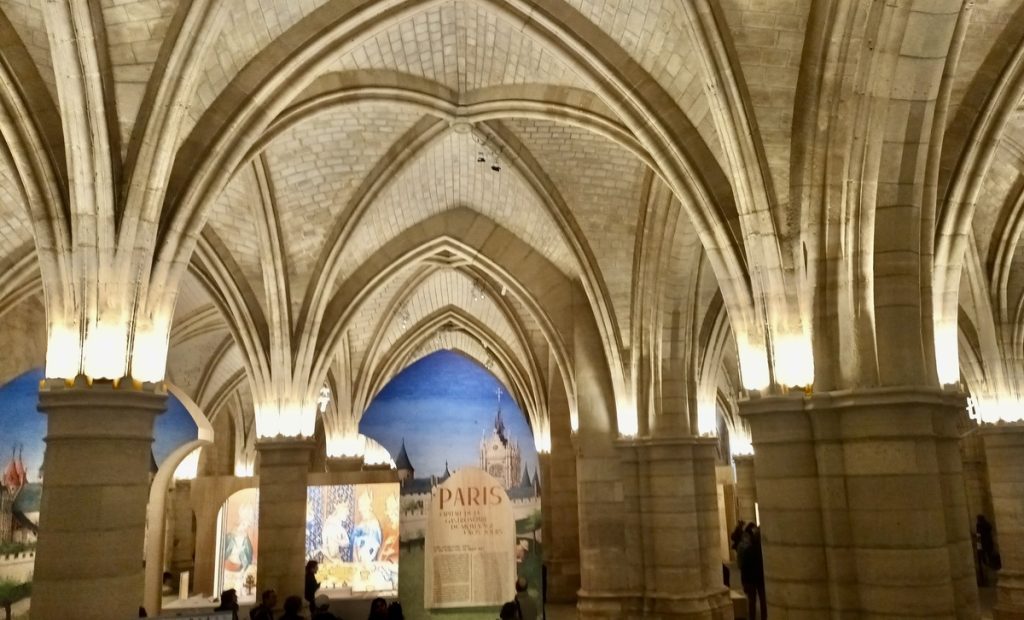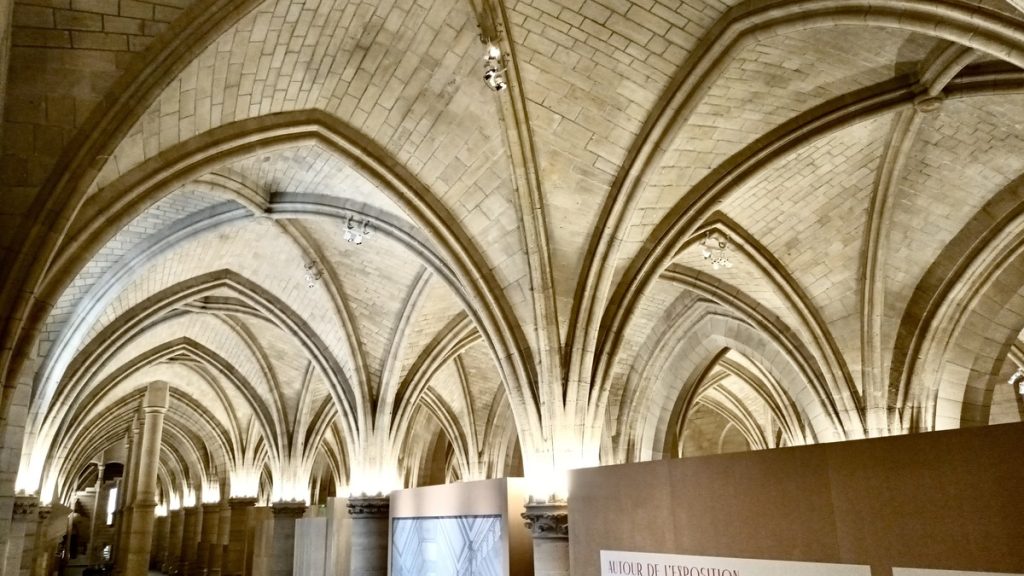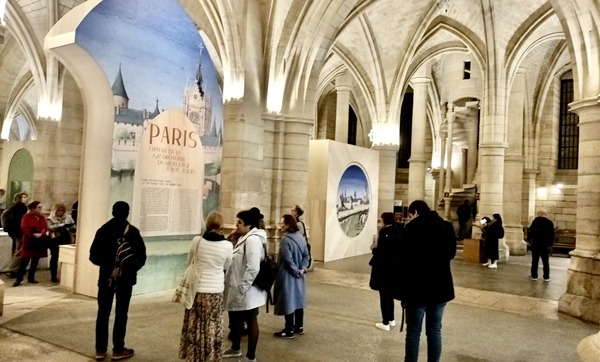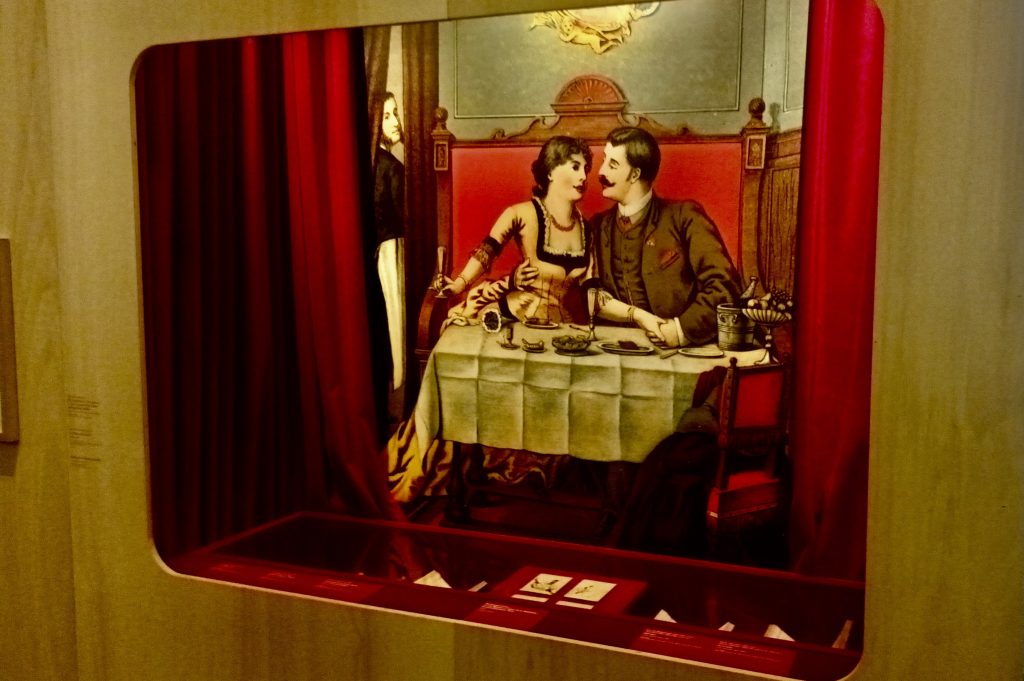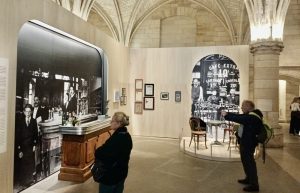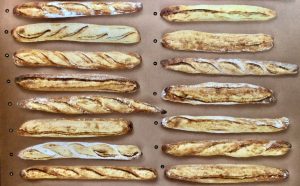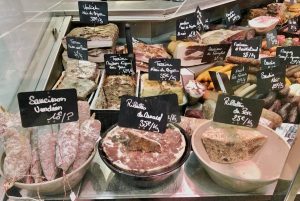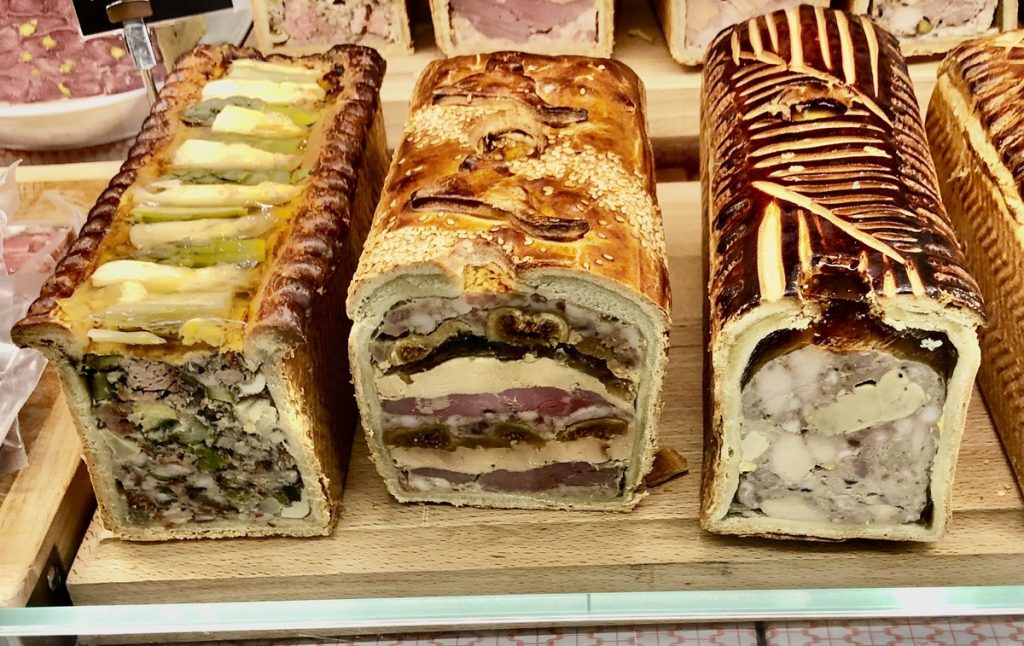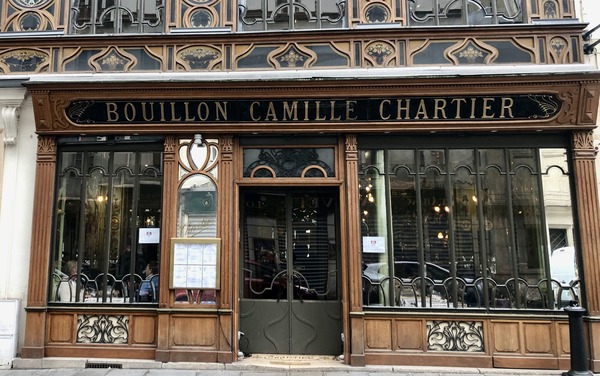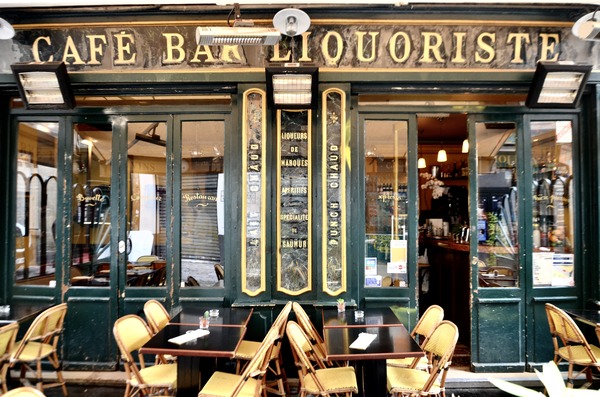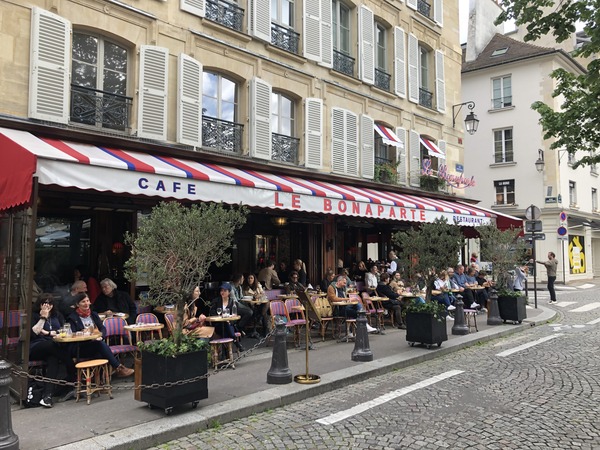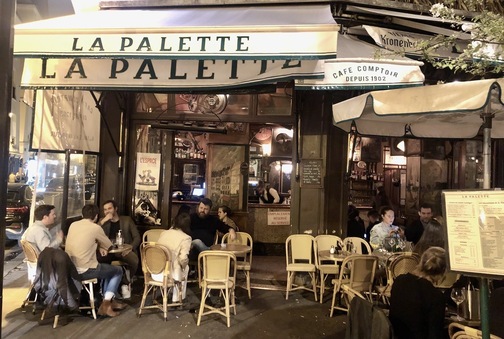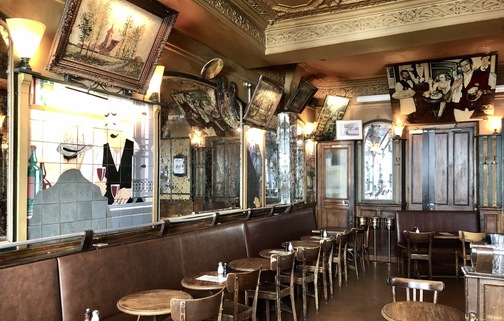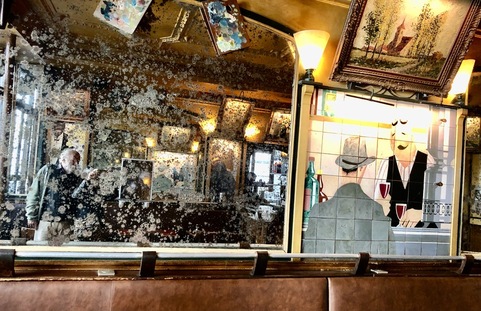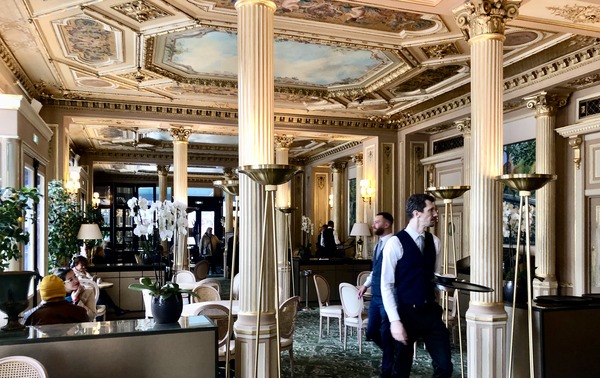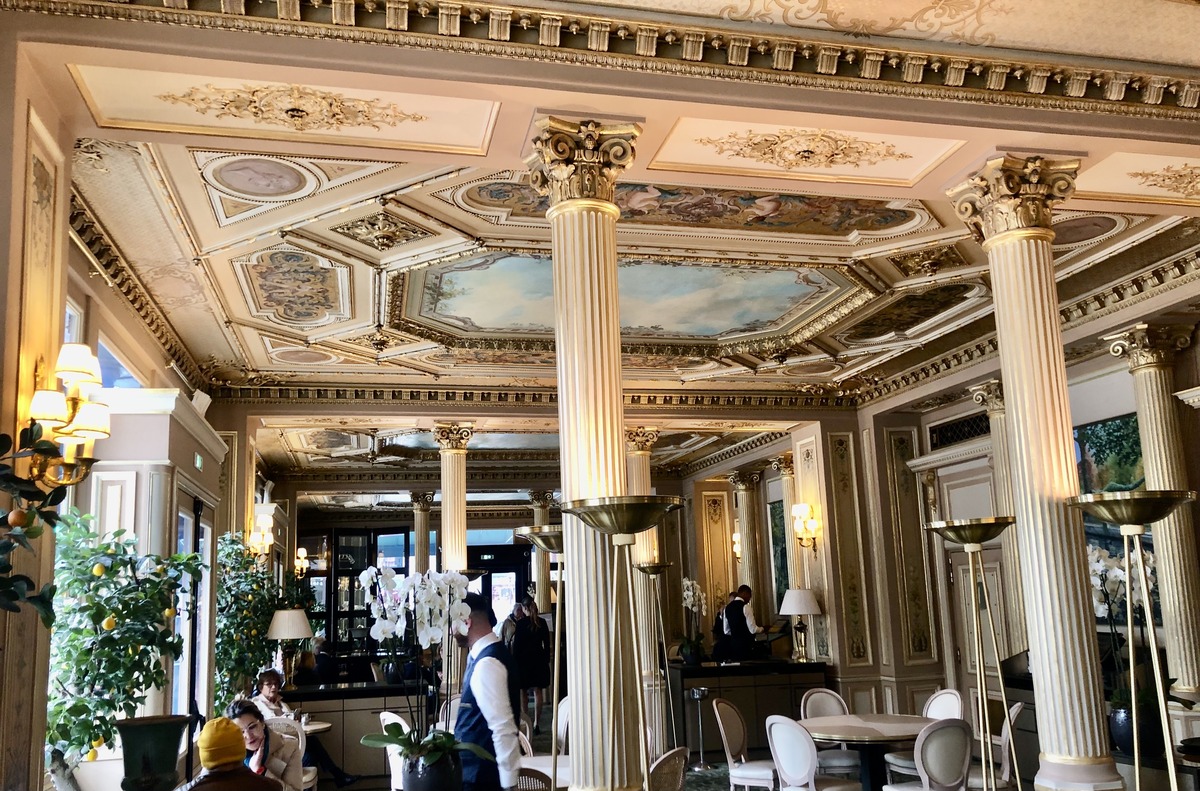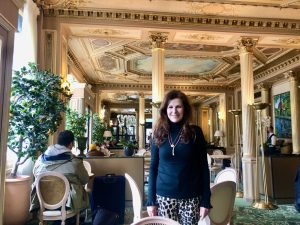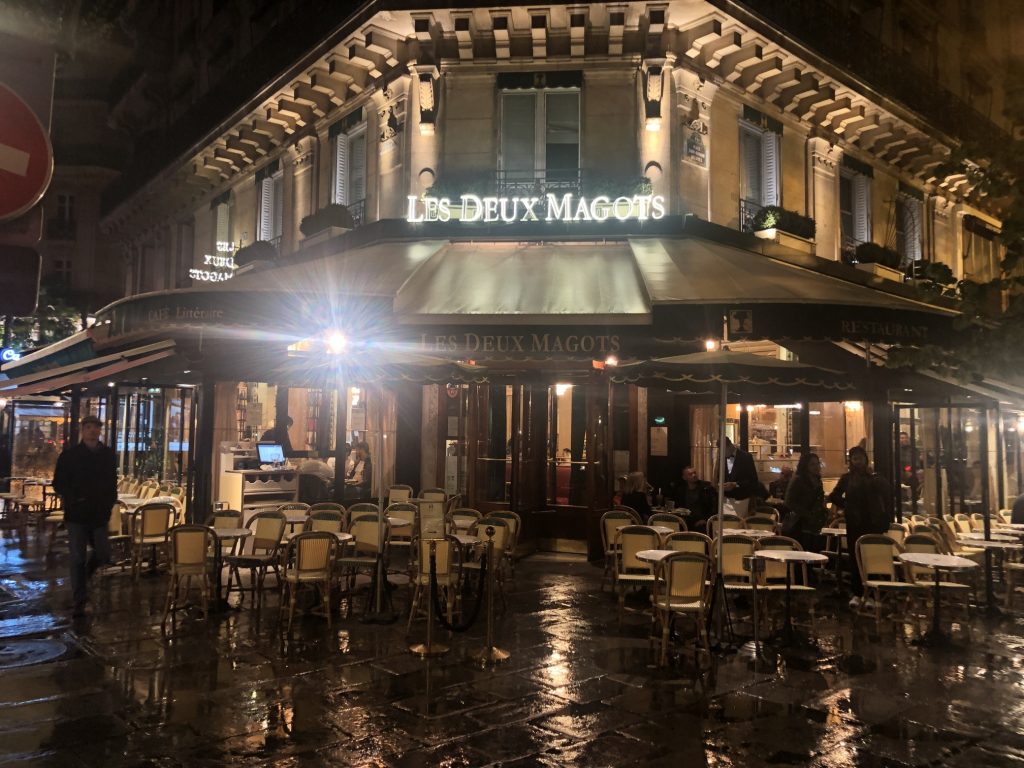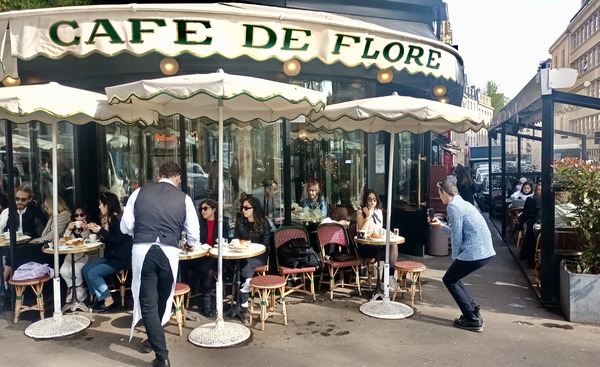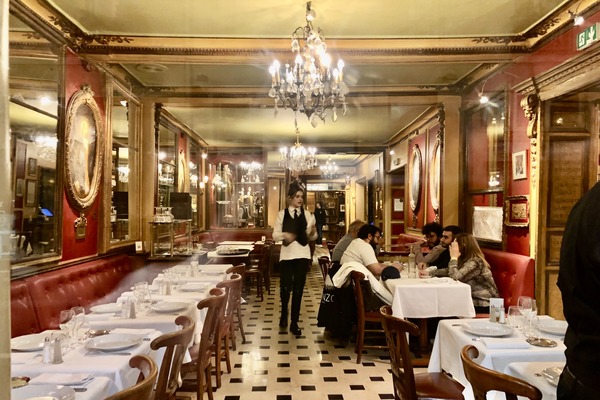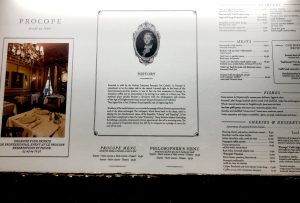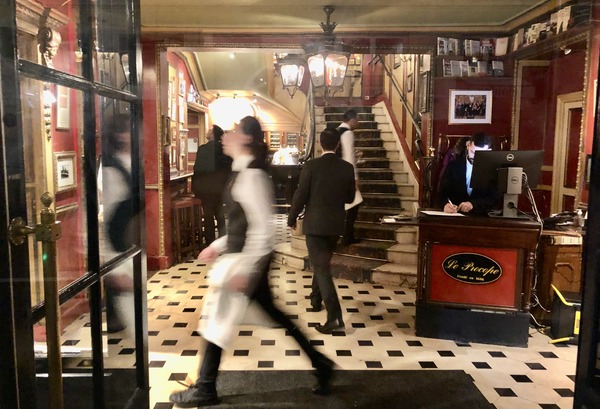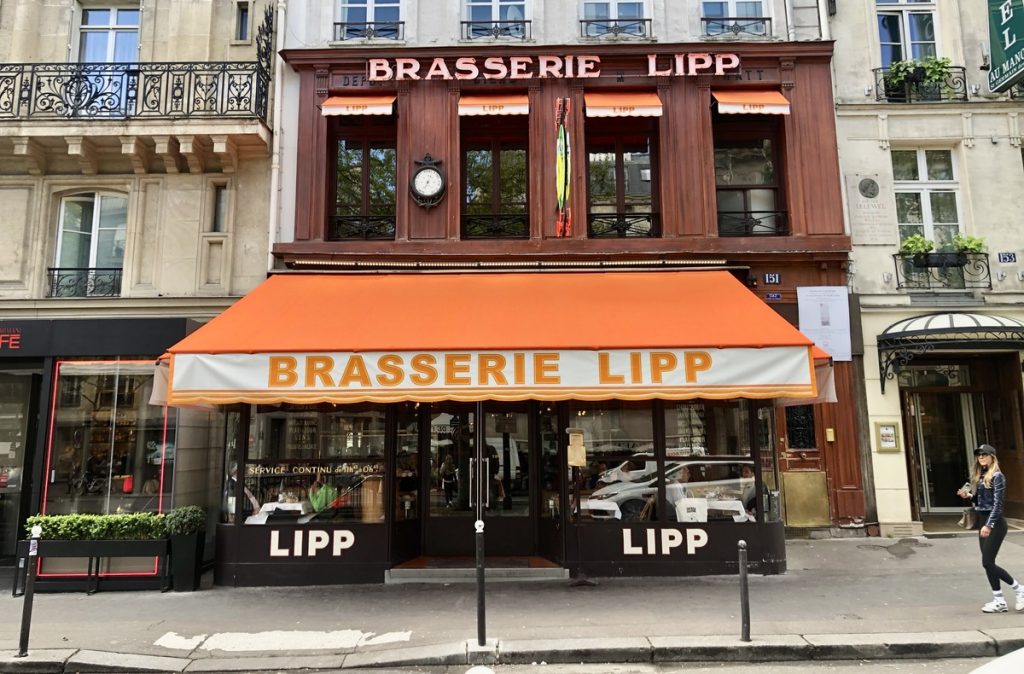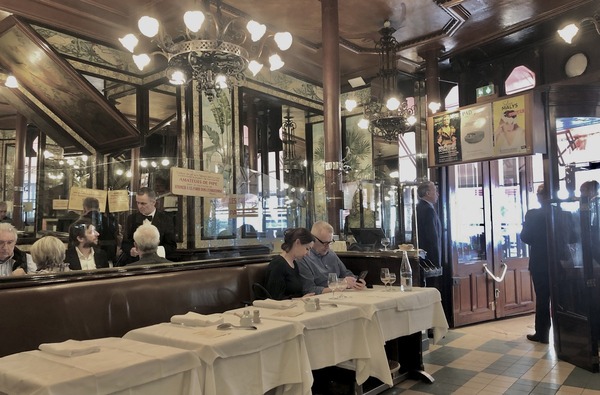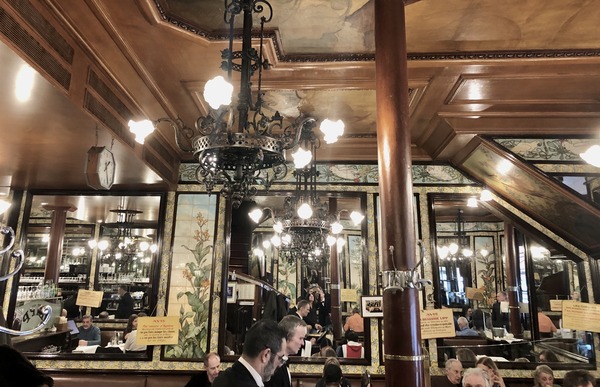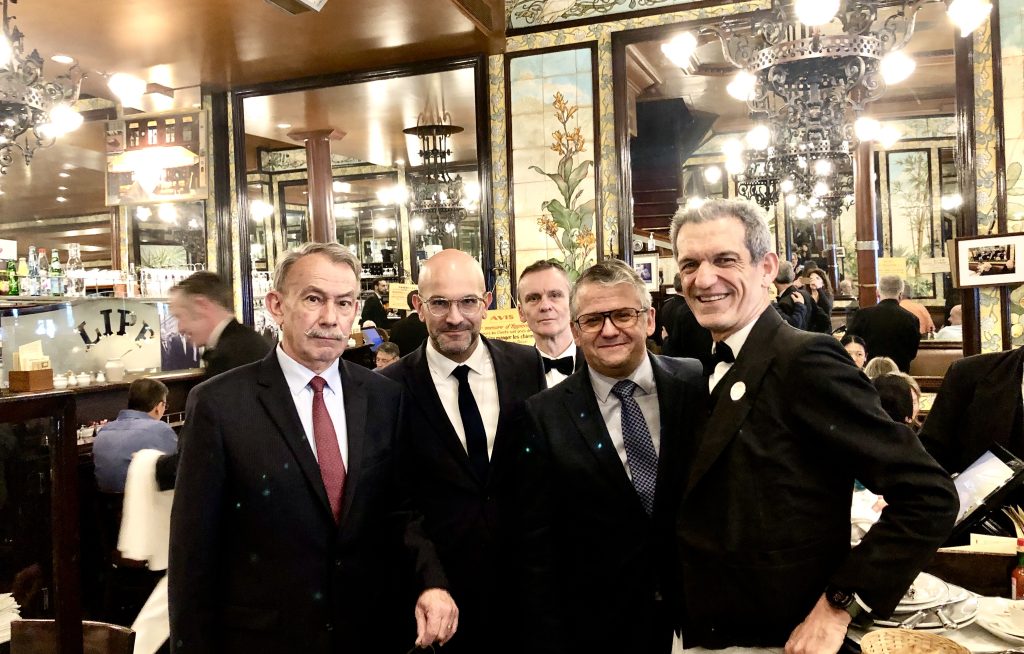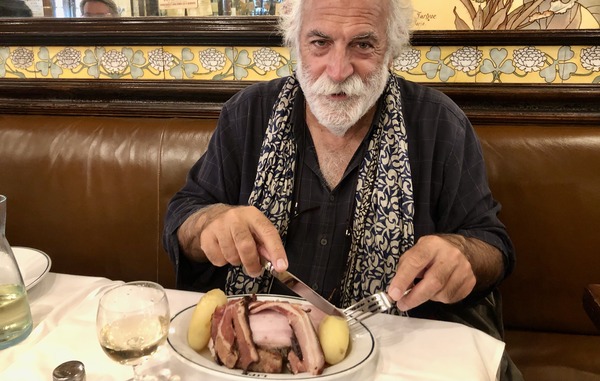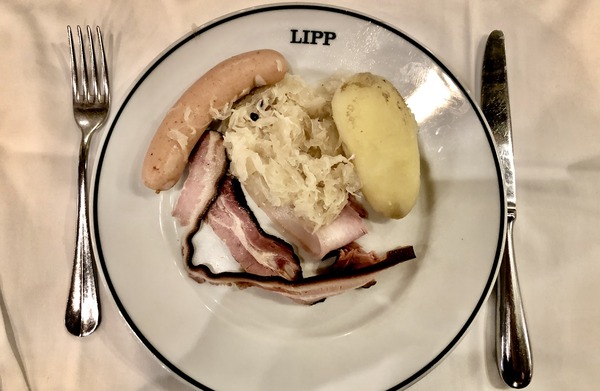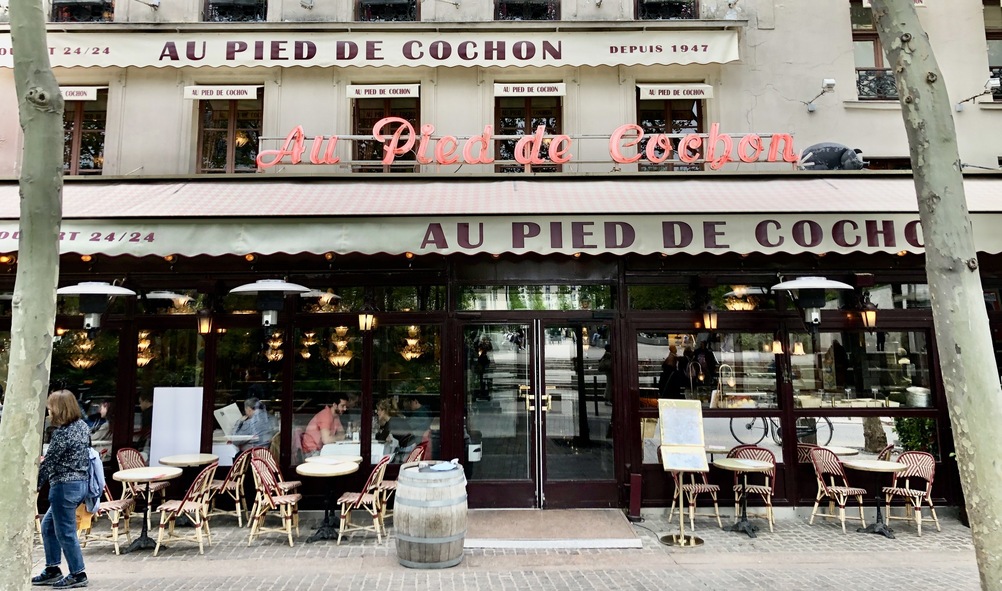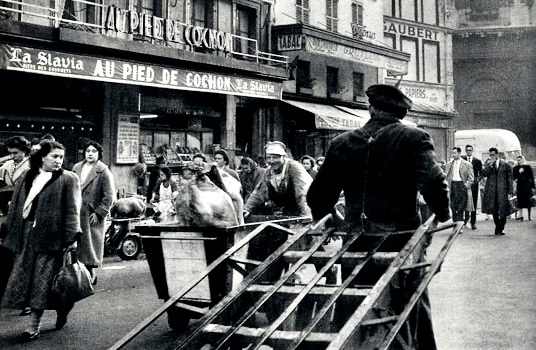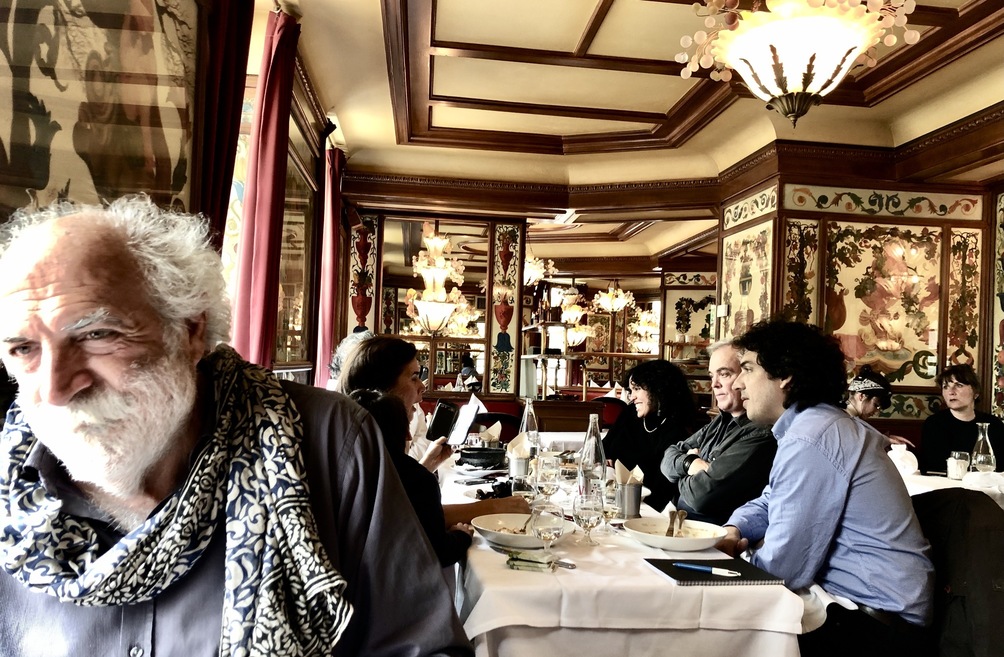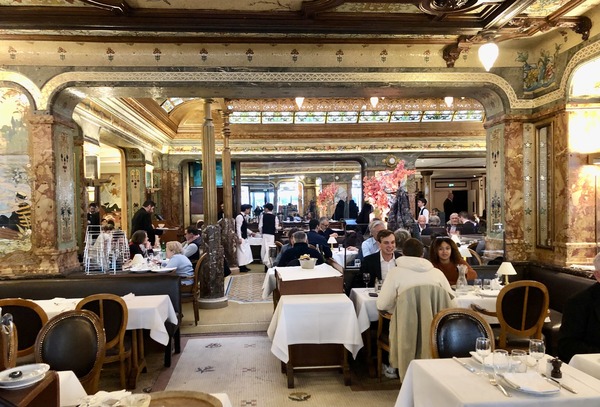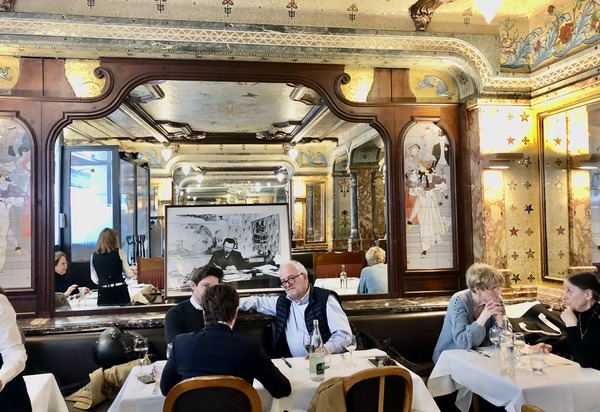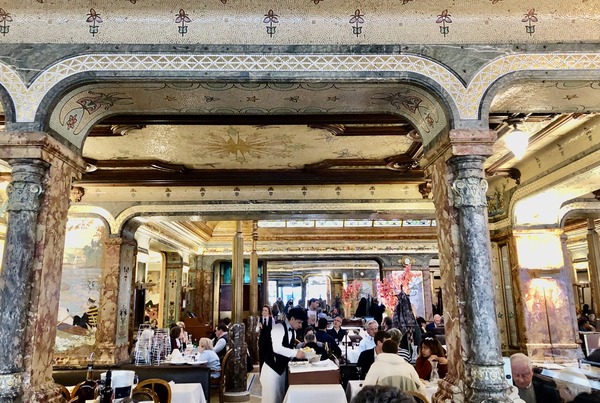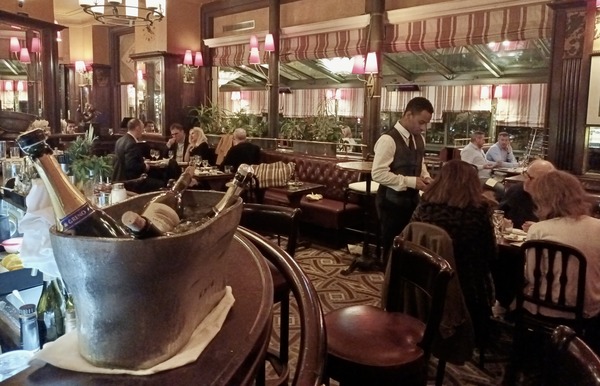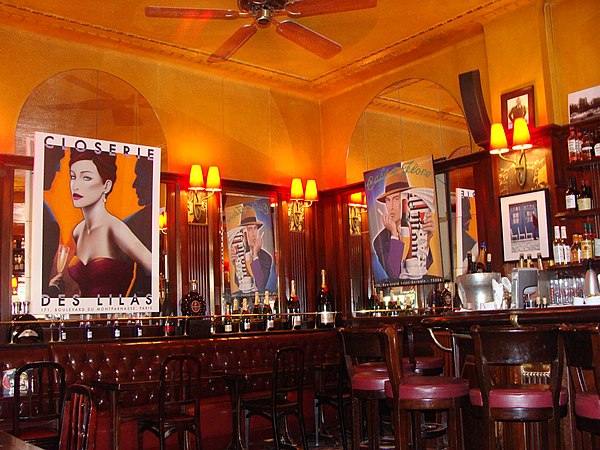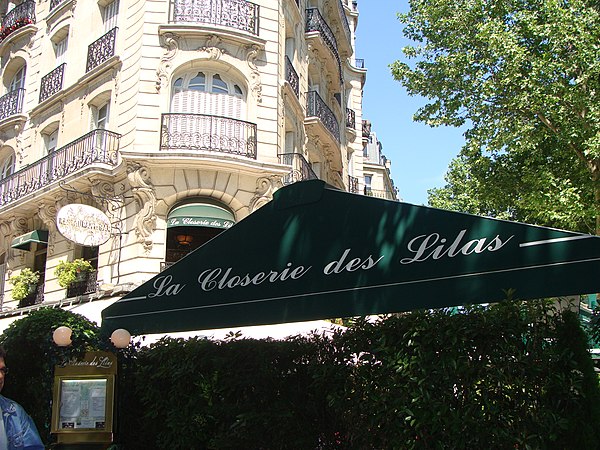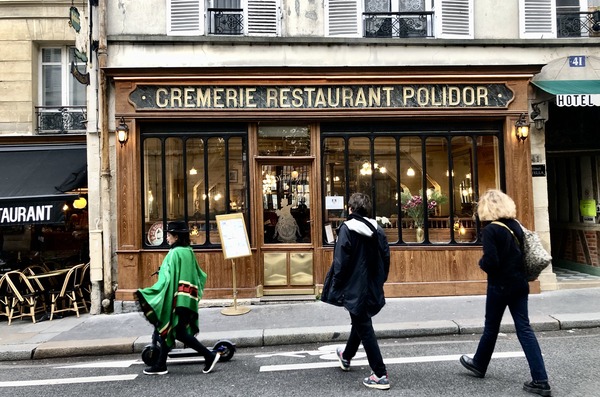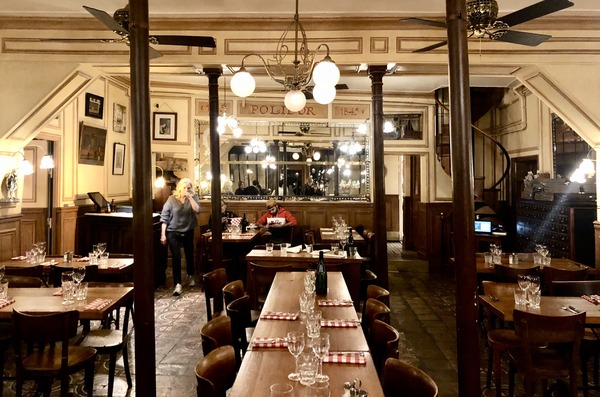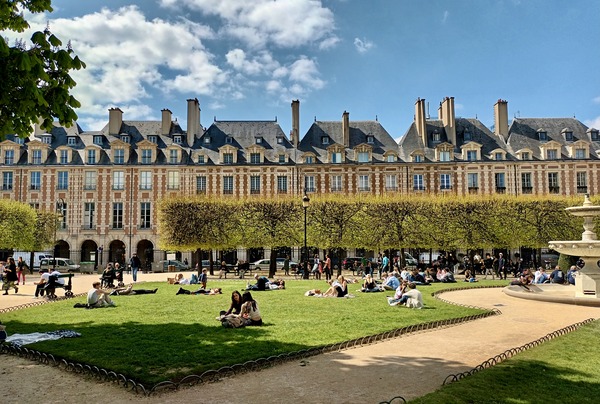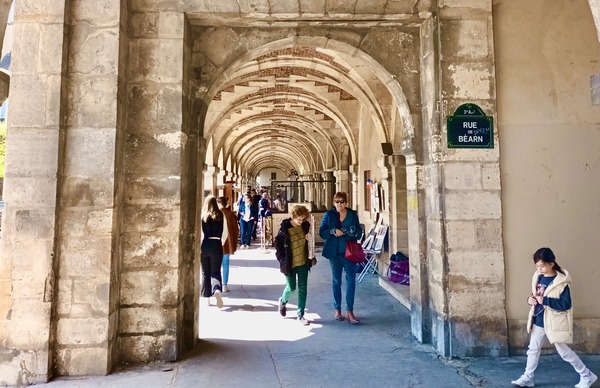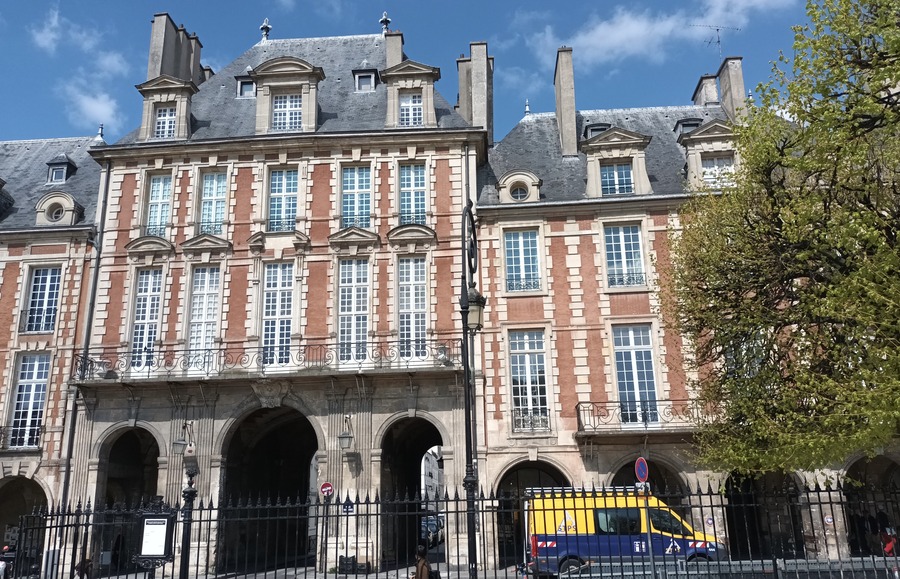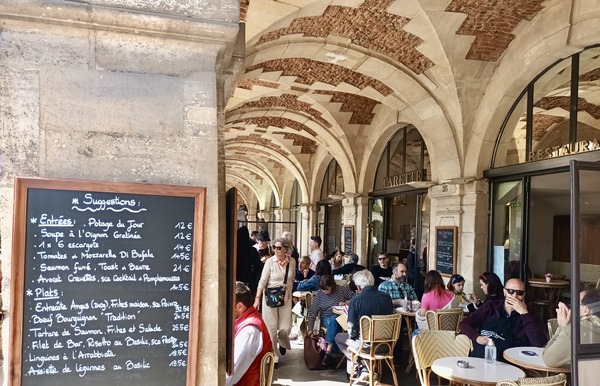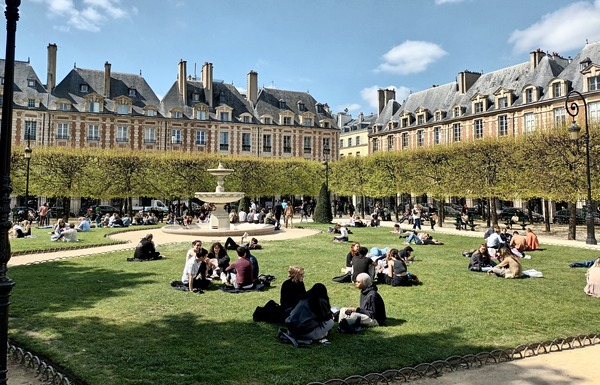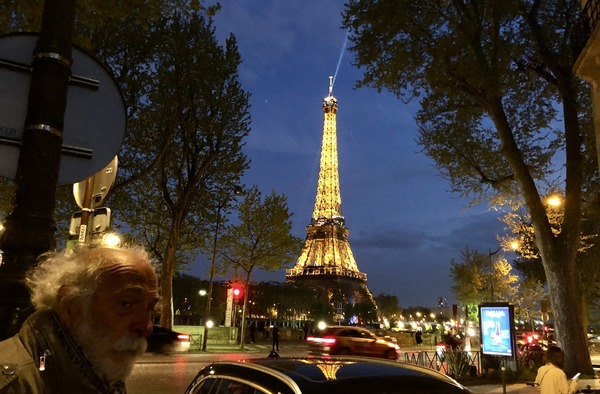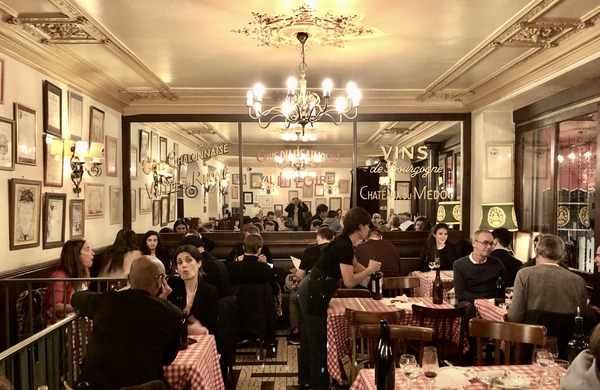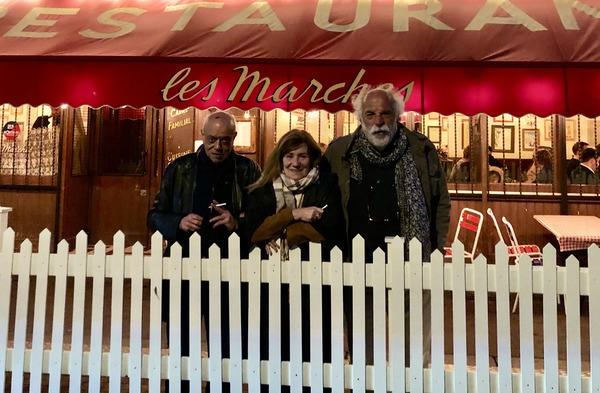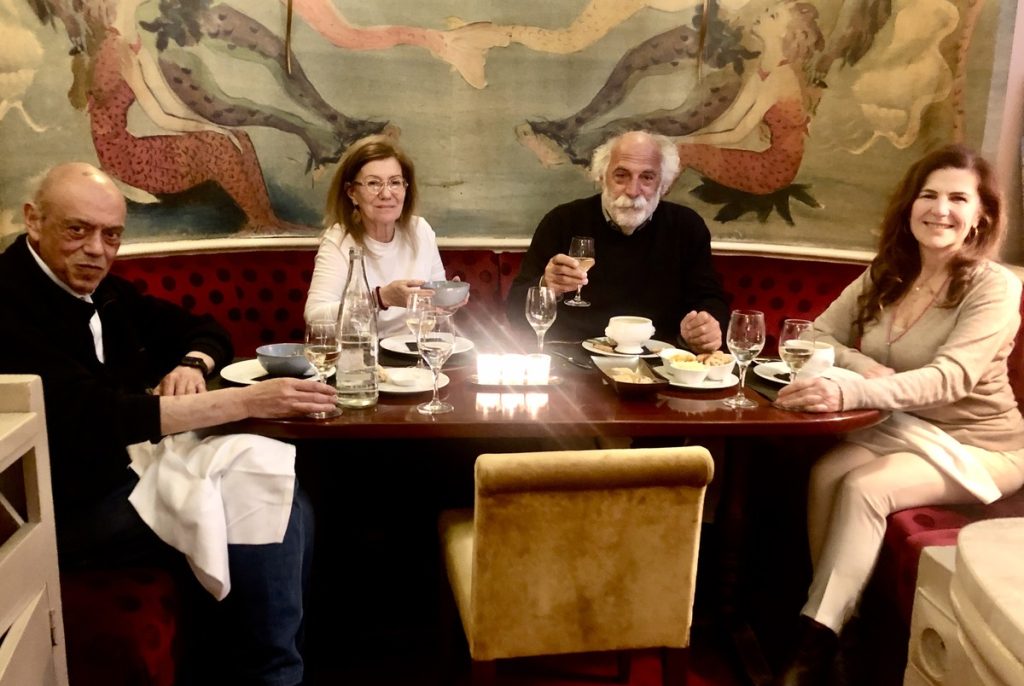In the Conciergerie of Paris from April 13 to July 16 the exhibition is presented "Paris, capital of gastronomy, from the Middle Ages to our days". The intention of the organizers was to describe historically contribution of the City of Paris to the history of global gastronomy and render it as "City capital of gastronomy".
Thus, in the topics that developed over time from the 14th century to the present day, the creation of the large metal markets, restaurants, but also bistrots, all the wealth of local products that fed the capital, the influence of of local cuisines, the great tradition of baking, but also its unprecedented contribution "City of Light" in the development of cooking and confectionery.
These themes were developed in individual pavilions in the Conciergerie's impressive large underground hall with the aim of legitimizing the prestige of Parisian gastronomy, showing the durability and exceptional longevity, and confirm the double role of the capital of France as guardian of tradition but also as a permanent workshop of Gastronomy.
The history of the Conciergerie building
The Conciergerie is part of the old royal palace Palais de la Cité and is located in the west of the island Ile de la Cité near her cathedral Notre Dame. It is part of a larger complex of buildings known as the Courthouse and is still used today for judicial purposes.
Η “Grande-Salle” (Great Hall) was one of the largest in Europe and its ground floor, known as "La salle des gens" - where the exhibition was presented - is 209 feet long, 90 feet wide and 28 feet high. It was used as a living room and dining room for the 2.000 people who made up the palace workers. The room was heated by four large fireplaces, and its lighting was sufficient, as there were many windows, which are now closed.
As early as the 18th century, the Conciergerie had acquired a bad reputation as a prison, and this reputation was reinforced as a result of it becoming internationally known as the "Guillotine Antechamber" during the Terror, the bloodiest phase of the French Revolution. It housed the Revolutionary Court, and during this period housed around 1200 prisoners, and from April 2, 1793 to May 31, 1795, sent 2.600 prisoners to the gallows. The most famous prisoners were Queen Marie Antoinette, the assassin of Jean-Paul Marat, Charlotte Cortés, the Girondins, who were sentenced by Georges Danton, who in turn was sentenced to death by Maximilian Robespierre, and the latter with his turn was sentenced to death in July 1794 and was mutilated, in the last phase of the bloodshed. It was only in the 20th century that it became a place to visit and hosts exhibitions, one of which was the one we visited and present to you.
The discovery of the restaurant
Behind the now international word restaurant hides a Parisian discovery that changed the map of gastronomy. Until the 180th century the aristocracy dined in their mansions, using their own staff, while travelers and the less privileged classes ate in the dining rooms of small inns of dubious hygiene and cleanliness. Then in the area of the Louvre, restaurants are developing that are slowly overturning the criteria of nutrition, creating new standards of comfort, quality and service. After the revolution of 1789, she also contributed to the staffing of the restaurants involvement of cooks, who no longer work in the royal courts and the aristocrats who have been expelled, and throughout the 19th century the Grands Boulevards of Paris are filled with restaurants, where apart from the wealth of gastronomy, the art of architecture is also developed and decoration of reception areas.
The Bistro
The geographical spread of restaurants is accompanied by social emancipation. And if the cream of the bourgeoisie is served in the large restaurants and country pavilions, the small and middle classes find their own spaces from the end of the 19th to the 20th century, such as bistro (bistrot) and the breweries (brasseries), many of which have made history because intellectuals and artists preferred them. Parisian bistrots to this day are a hallmark of Parisian dining. Places with warmth and coziness, reasonable prices and food that warms the heart and stomach.
La baguette
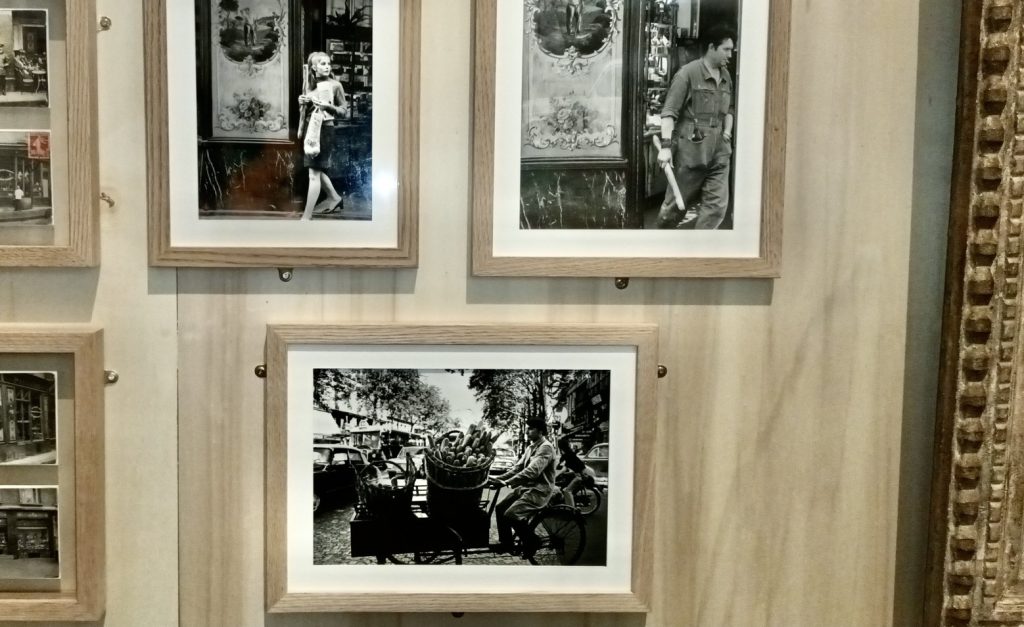
Three photos featuring the trowel: A Catherine Deneuve-type Frenchwoman, a worker with trowel in hand and a bottle of wine in his pocket, and a cyclist doing home deliveries by bike!
The French baguette, this long narrow bread with a crispy crust and a light and delicate interior is a Parisian discovery from the end of the 18th century. At the end of the 19th and at the beginning of the 20th century, luxury bread is made with refined flours, and only in the interwar period does it become more popular. In 1956, the baguette officially became a popular bread with a net weight of 300 grams, while in 1993, the baguette with "French tradition" was created, with flours of a special composition, without any freezing process, preservatives or flavor enhancers.
French charcuterie
France is the country that developed charcuterie more than any other country in Europe since the Middle Ages. The French sausages, while nowadays they are high-quality products (delicatessen) and are among the most important ambassadors of French gastronomy, let's not forget that they are creations of French country cuisine, which were aimed at the utilization and preservation of meats, poultry and game at a time when there were no other ways than curing and placing in fat.
Among the cured meats (hams, sausages, salamis), foie gras, terrines and pâté stand out. Nowadays, housewives, home and professional cooks, and imaginative chefs create based on meats (pork, beef), poultry (hens, ducks), game (boar, hare, deer, pheasant, snipe), fish and with various pairings such as with dried fruits (figs), nuts (peanuts in shell), herbs, herbs (thyme), and spices (cedar, nutmeg, ginger, cloves), pates and terrines of all kinds and possible combinations.
The foie gras (foie gras = fatty goose liver) which is very often made into a kind of pate, is created by force-feeding geese in order to swell their liver and make it bigger, soft, fatty and tasty. Sta pate the dominant material is the liver of duck, chicken, pork, etc. Historically, the word pate came from the tendency to wrap the corresponding preparations in dough, which in French is called pâte. The terrine they come from the word terrine (terrine) which means from the earth (terre) and referred to a large clay vessel in which it was baked in the oven, which over the years gave its name to the content. Terrines, unlike pâtés whose material is pureed, have larger and more irregular pieces, and usually combine pork and liver. They are offered in 2cm thick slices as cut from the elongated stick surrounded by the dough.
The Gastronomy of Paris outside the exhibition
Our visit to the individual stands of the exhibition Paris, capital of gastronomy, from the Middle Ages to our days, with its wide range of topics, made us interested in taking a look and re-remembering the gastronomy of Paris as perceived and experienced by Parisians and its visitors in shops (beers, cafes, bistros) that wrote and continue to write history.
The preserved facades of Paris
Thanks to a legislation established by the French State, food and catering establishments are protected and classified as preserved, so that they cannot undergo changes that would alter the facade or the decoration or the roof. In this way, nostalgic images and the atmosphere of other times that take you two centuries back were saved.
Cafes (Cafés) in Paris
The rapid growth of Paris during the 18th and 19th centuries resulted in the creation of large and numerous cafes on the major boulevards of the French capital. It is estimated that in 1789 there were around 900 coffeehouses in Paris. Cafés in Paris were the heart of Parisian social life, as described in the works of their patrons: Balzac, Flaubert and Guy de Maupassant. Nowadays French Coffees remain the most distinctive feature of its streets "City of Light".
The Palette
La Palette is one of the best-known haunts of artists, but also of the Greeks of Paris. It opened its doors in 1902 and was originally the traditional gathering place for the students of the School of Fine Arts, the famous Fine arts which is very close, the galléries owners and the artists. The explanation for this is also given by its name, since palette is the palette of colors that artists use to create their works. Of course, it was not only a hangout for artists but also for the domestic and international jet-set!
Its patrons were Cézanne, Picasso and Braque, later Ernest Hemingway and Jim Morrison and today, among other stars, Harrison Ford and Julia Roberts have visited it. La Palette includes 2 rooms. You will see the first one as you enter the store. It is narrow and small, decorated with many pallets on the walls and hosts the bar. The second one you will find behind a wooden door on the sides of the bar.
It is larger and decorated with ceramic designs dating from the 1930s-1940s, many paintings depicting daily life in Paris in the last century, copper hooks and old mirrors with weather spots. The interior of this room and the facade of La Palette have been declared historic monuments! Greek artists, writers and intellectuals such as Fasianos, Alexakis, Poulantzas, Tsoukalas and others frequented here.
( La palette 43, Rue de Seine, 75006 Paris)
Café de la Paix
One of the most popular historical cafes in Paris is the Café de la Paix, which has been preserved and is still operating today. It operates inside the famous Le Grand Hotel and is adjacent to the historic Paris Opera. The Café de la Paix was founded in 1872, the same year the Paris Opera was built.
Its name means "Cafe of Peace" and it too has such a long history that the French Government declared it a historic building in the capital in 1975. Café de la Paix opened in 1872 with pioneering Belle Epoque decor, which it bore the signature of Charles Garnier (the architect who built the Paris Opera). Since then it has become a favorite hangout for writers, politicians and people of art, while even kings - such as Edward the 7th of Britain - came for their coffee.
Oscar Wilde also sat here, as did Henry James, as well as the legendary tenor Enrico Caruso. But the most special historical touch came at the end of World War II, when General Charles de Gaulle stopped for an omelette as he made his triumphal entry into the Nazi-liberated capital.
(Café de la Paix 5 Pl. de l'Opéra, 75009 Paris)
Les Deux Magots
Les Deux Magots is also located in Saint-Germain, almost opposite its competitor Café de Flore. It opened in 1884 serving coffee and liqueurs and patronized many of the same people who frequented the Café de Flore. It was particularly favored by writers such as Ernest Hemingway, Albert Camus and James Joyce, while it is said that when Jean-Paul Sartre and Simone de Beauvoir were not discussing philosophical and social issues at the Café de Flore, they preferred it for their romances appointment. Salvador Dali also frequented here, and if you visit someone will surely tell you about the night Hemingway had a fight with F. Scott Fitzgerald over literary issues. Nowadays, Les Deux Magots is still a hangout for the Parisian elite, but also attracts many tourists, who treat it only as an attraction to project their presence with photos from there on social networks.
(Les Deux Magots, 6 Pl. Saint-Germain des Prés, 75006 Paris)
Flore's coffee
Founded in the 1880s on the famous boulevard Saint-German, Café de Flore takes its name from Flora, the Roman goddess of vegetation and flowers, becoming a meeting place for men of letters and the arts, sometimes politicians . However, Café de Flore achieved its greatest glory in the 20th century, when it was restored in a modern Art-deco style and became a hangout for painters such as Pablo Picasso, for philosophers like him Jean-Paul Sartre or for him André Breton and the Surrealists who coalesced around him. Later, the patrons would include movie stars like Lauren Bacall, even tycoons like FIAT president Gianni Agnelli. The Café de Flore itself, meanwhile, has embraced the association with letters and the arts, instituting its own literary prize (Prix de Flore), which has been awarded annually since 1994. The current list, in addition to the trademark espresso and the famous Vienois chocolate, it includes butter cookies, chocolate bars, exquisite fruit tarts, and also profiteroles.
(Café de Flore, 172 Bd Saint-Germain, 75006 Paris)
Procope Café
Dating back to 1686, it is one of the oldest cafés in Paris. It was opened by the Sicilian chef Procopio Cutò, who did not name it after himself, but after the Byzantine scholar and historian Procopius, as he had a special admiration for him. The current shop is of course renovated, but it retains an 18th century atmosphere and is distinguished by its crystal chandeliers. The table where Voltaire used to sit is still preserved, which is exhibited as an attraction.
Nowadays it functions more like a restaurant, but it still serves coffee in the afternoons, which you can enjoy accompanied by one of its famous sweets, such as the coffee tart or the Procopio tiramisu. Cutò had an excellent reputation as a cook, so the restaurant was fortunate enough to become famous in his own time, both for its food and for its coffee, which seemed particularly exotic to the French aristocracy of the time. That is why the clientele he had at times is considered unbeatable: here he used to sit e.g. Marie Antoinette and Napoleon the Great, even pioneers of the Enlightenment like Voltaire or fathers of American independence like Thomas Jefferson.
(Procope Café, 13 Rue de l'Ancienne Comédie, 75006 Paris)
Brasseries in Paris
Brasserie Lipp
Brasserie Lipp is located on the famous boulevard Saint-Germain (151, Bd Saint – Germain) on the Left Bank (Rive Gauche) of the Seine in Paris, where other historic and famous cafes of the French capital are also gathered, such as Café Deux Magots and Café de Flore. It is one of the most famous café-restaurants in Paris, frequented by politicians, writers and fashion designers.
Brasserie Lipp was founded by Leonard Lipp, an Alsatian refugee who had immigrated to Paris, like other Alsatian refugees, after the annexation of Alsace to Germany following the Franco-Prussian War of 1870. It began operating in end of the 19th century.
The interior of the brasserie is beautifully decorated with Art Nouveau ceramic tiles with painted parrots or floral motifs. Among the famous literary patrons of Brasserie Leap are Ernest Hemingway, Antoine de Saint-Exupéry, André Malraux, Albert Camus, Jean Genet and others. A regular patron was also Pablo Picasso, who had his workshop near Brasserie Leap. Political celebrities include Georges Pompidou, Valéry Giscard D'Estaing, François Mitterrand and Jacques Chirac.
The Lipp brasserie team lined up from left to right: Claude Guittard store manager for 31 years, the new manager is a 2nd generation Greek in Paris Stefanos Kounalakis , Frank Lasne in service, Patrice Le Cudennec in charge of reception and Dominique Masson.
From the wide variety of dishes on the Lipp brasserie's menu, I would not neglect the national food of Alsace, the sauerkraut (sauerkraut) with sausages and boiled potatoes.
(Brasserie Lipp, 151 Boulevard Saint – Germain, 75006 Paris)
Brasserie “Au pied de cochon”
The historic brasserie Au pied de Cochon is located in the Halles district, at 6 rue Coquillère, since 1946, where the huge metal market of Paris, the so-called belly (ventre) of the capital, was located. Then Clément Blanc took over a small bistro deserted from the war era of 1940, and attempted to serve soups 24 hours a day for workers and market porters.
At the same time he created the famous pig's foot (pied de cochon) which became the specialty that made him famous. In the 1950s the shop was frequented by workers, night owls, politicians, artists, showbiz and sports stars, with Charles Aznavour and Jean Paul Belmondo as regular customers. In 1974, the historic market of Prissio is removed and the area is upgraded with the new commercial market, as well as the Au pied de cochon which expands in width and height.
Today the brasserie-restaurant retains the decor and atmosphere of 1990 when it was transformed into a 4-story vintage bistro inspired by the 1900s Belle Epoque era, with Murano crystal, murals painted by Fine Arts students with flowers and little piglets in between them, while on the doors the bronze handles that represent pig's feet are impressive!
Since that time, a large part of its clientele are also tourists who want to try the emblematic roast pig's leg, - the bistro's vendetta -, the various versions of the pig (cochonerie) and all kinds of meat, shellfish and fish, the Parisian onion soups (rolls and melted and gratinized Emmental or Gruyere have been added to the labor onion soup), but also to honor one of the most important culinary landmarks of Paris. And all this at very affordable prices for the average visitor.
(Au pied de chochon, 6 rue Coquillière, 75001 Paris)
Brasserie Mollard
Officially classified as a historical monument of Paris since 1989 Brasserie Mollard located opposite its train station Saint Lazare, has been recognized as one of its most important examples Art nouveau. The apotheosis of 19th century decorative art. It was created by the Mollard family who arrived in 1865 from Savoie with a carriage and then built a small bistrot on the outskirts of Paris, in front of the station.
Thirty years later, after business went very well, the family built one of the most beautiful shops, with famous mosaics, marble columns and inlays from Italy, ceramics, lamps, mirrors and furniture. In the interwar period, however, the decoration was considered old-fashioned and was covered up. It was not until 1965 that the restoration took place after all the frescoes and decor of the time were revealed without any deterioration.
Today the Brasserie Mollard is not far from the two large superstores of Haussmann Spring and Galeries Lafayette it is an ideal place for a tasty break from all day shopping, but also a beautiful place for evening dinners. Here you will find a wide range of French cuisine, such as seafood platters (shrimps, mussels, oysters, crabs, etc.), chateaubriand bearnaise, veal kidneys flambé with cognac, the unique Omelette Surprise and a wide variety of sweets.
(Brasserie Mollard, 115 Rue Saint-Lazare, 75008 Paris)
Closerie des Lilas
The famous Closerie des Lilas in Montparnasse, meaning "The Garden of Lilacs", takes its name from the lilacs that once grew around the cafe, and is one of the most historic and traditional café-bars and popular meeting places for writers and artists in Paris.
It was founded in 1808, and is one of the oldest literary cafes, not only in Paris, but also in all of Europe. The cafe suspended its operation during the Second World War and reopened in 1953. Before the war, August Strindberg, Oscar Wilde, Paul Valéry, Amedeo Modigliani, among others, frequented it, while after the war, André Gide, Jean Cocteau, Guillaume Apollinaire, Eric Tati frequented it. , Arturo Toscanini, Ernest Hemingway, and American composer George Gershwin.
On bronze plaques on the old wooden tables of the Closerie, the names of its famous patrons are commemorated: Hemingway, Valéry, Apollinaire, Chagall, Soutine, Edgar Degas, Edvard Munch, Samuel Beckett, Andre Breton and others. Here and for years at the entrance of the Bar - the warmest and most intimate area of the store - there is a piano that always plays nostalgic tunes and you can, apart from the Parisian atmosphere, feel a bit of Casablanca with "Play it again Sam".
(Closerie des Lilas, 171 Bd du Montparnasse, 75006 Paris)
Polidor
Polidor is in its area Odeon since 1845 when it opened as a commercial cheese shop and restaurant. From 1890 it took its current form as a bistrot and became a hangout for artists, students and intellectuals and of course the neighbors. Its patrons were Eugene Ionesco, the poet Paul Valéry, the Nobel laureate Boris Vian, the writers Verlaine, Rimbaud, Jean Jaurès, James Joyce, André Gide and Ernest Hemingway who even mentions it in his latest book "A Mobile Feast".
In the last decade people remembered it again, because Woody Allen in his 2012 movie "Midnight in Paris" had scenes from it. Typical French recipes in a popular atmosphere, with the possibility to choose a bottle of wine from the restaurant's cellar, located in the side room, at an additional cost of 10 Euro.
(Polydor, 41 rue Monsieur Le Prince 75006 Paris)
The Place de Vosges and its cafes
The Place de Vosges is considered the most elegant square in Paris and one of the most beautiful in the world. The idea began in the early 17th century when King Henry IV of France envisioned a stately shopping district of Paris, centered on Place royale, in the heart of the district Marais a breath away from the Place de la Bastille, where merchants could live on the top floor, have their workshops on the middle floor and their shops on the ground floor.
Unfortunately, Henry IV did not have time to see his great dream come true since he was assassinated two years before the completion of the square. In 1793, immediately with the French Revolution, the name Place Royale gave way to the appellation Place de Vosges, as a tribute to the province of the Bosque, the first to agree to pay taxes to the newly formed republic of France.
The Place de Vosges is a model, because it became the model of the squares of the major urban centers in the years that followed, being a model of elegance and refinement. Among the dozens of famous personalities who once lived in this amazing, enviable neighborhood and the leading French writer Victor Hugo the author of Les Miserables, one of the most important novels in world literature. who even wrote a large part of it there.
In the 20th century Place de Vosges was considered one of the most sic neighborhoods of Paris. Although it is located between the Marais, Halles, Chatellet, Center Pompidou, Bastille, the square is very quiet with the main traffic being pedestrians who, whether in sun or rain, can walk around the square through the uniform arcades and admire the works of the many galleries that are located on the ground floor - in the place of the old commercial stores - or to drink their coffee in the cafes located in between.
In the arcades of the Place de Vosges is the famous Café Hugo, which is much more than just another bistro in the capital of France. Home to visuals and intellectuals, the cafe serves delectable coffee with cream, authentic croissants and warm onion soup with plenty of history.
But when the weather is sunny, Parisians - mostly - enjoy their picnic with French baguettes with cheeses, charcuterie and a bottle of wine on the laid tablecloth on the grass, having the feeling that they are in one of the most beautiful, elegant and more peaceful places in the world.
Among the cafes and restaurants hidden in the arcades of the Place de Vosges is the My Burgundy at the western end of the square, where you will grab a table at lunchtime for light and delicious lamb chops, fine steak tartare and crispy fries, while at another point, the carette located in the northern part of the square - it is always sunny - you will find delicious salads, fillets and other French and Mediterranean flavors.
The steps
Les Marches is a real Parisian bistrot, like the ones we imagine in our dreams. A small corner next to the Museum of Contemporary Art along a car-free street on one side of which is a staircase with many wide steps - from which it got its name - and on the other side of the street a sudden but impressive view of the Eiffel Tower.
The restaurant's kitchen is family-run, honest, generous, far from touristic and nostalgic intentions. The authenticity of the cuisine is confirmed apart from our personal opinion, and by the red and blue Routiers sign - posted in a prominent position - which has as its motto: "Une halte chez un routier, c'est l'assurance d'un bon repas peu expensive!' that is, a stop at the Routiers certified stores is a guarantee for good and cheap food.
(Les Marches, 5 Rue de la Manutention, 75116 Paris)
La Méditerranée
La Méditerranée restaurant belongs to the category of charming Parisian restaurants. It opened its doors opposite the Odeon theater in 1942 and very soon became a great success. THE jean cocteau, friend of Jean Subrenat, the then owner of the store, designed the logo of the store and o Christian Berard famous painter of the frescoes. To this day it remains a hangout for people of art and those who want to eat in a quiet, elegant and spacious space, without crowds and noisy atmosphere.
The classic cuisine of La Méditerranée is mainly seafood and fish with Mediterranean bouillabaisse and sole fish with bretonne meunière sauce being the protagonists. On its walls you will see photos and dedications from Cabu, Bernand Mabille, George Wolinski, David Hockney, Edgar Morin, Monica Bellucci, Jane Birkin, Bette Midler, Mick Jagger, Jody Foster, Botero, Uberto Eco and Charles Aznavour.
(La Méditerranée, 2 Place de L'Odéon 75006 Paris)
Epilogue
Our trip to Paris on the occasion of the exhibition Paris, capital of gastronomy, from the Middle Ages to our days led us to streets and addresses that have so much to offer in culture of gastronomy and quality of life. The visits to the historic cafes, the famous brasseries, but also the humble bistrots, combined with our visits to painting exhibitions with works by the artists who frequented them (Picasso, Matisse, Cocteau), created a sense of joy and bliss that only the art of happiness and enjoyment can offer you. And at the same time the feeling, that the more Paris you know, the more you realize how little you know and that it is worth coming back as soon as possible.

